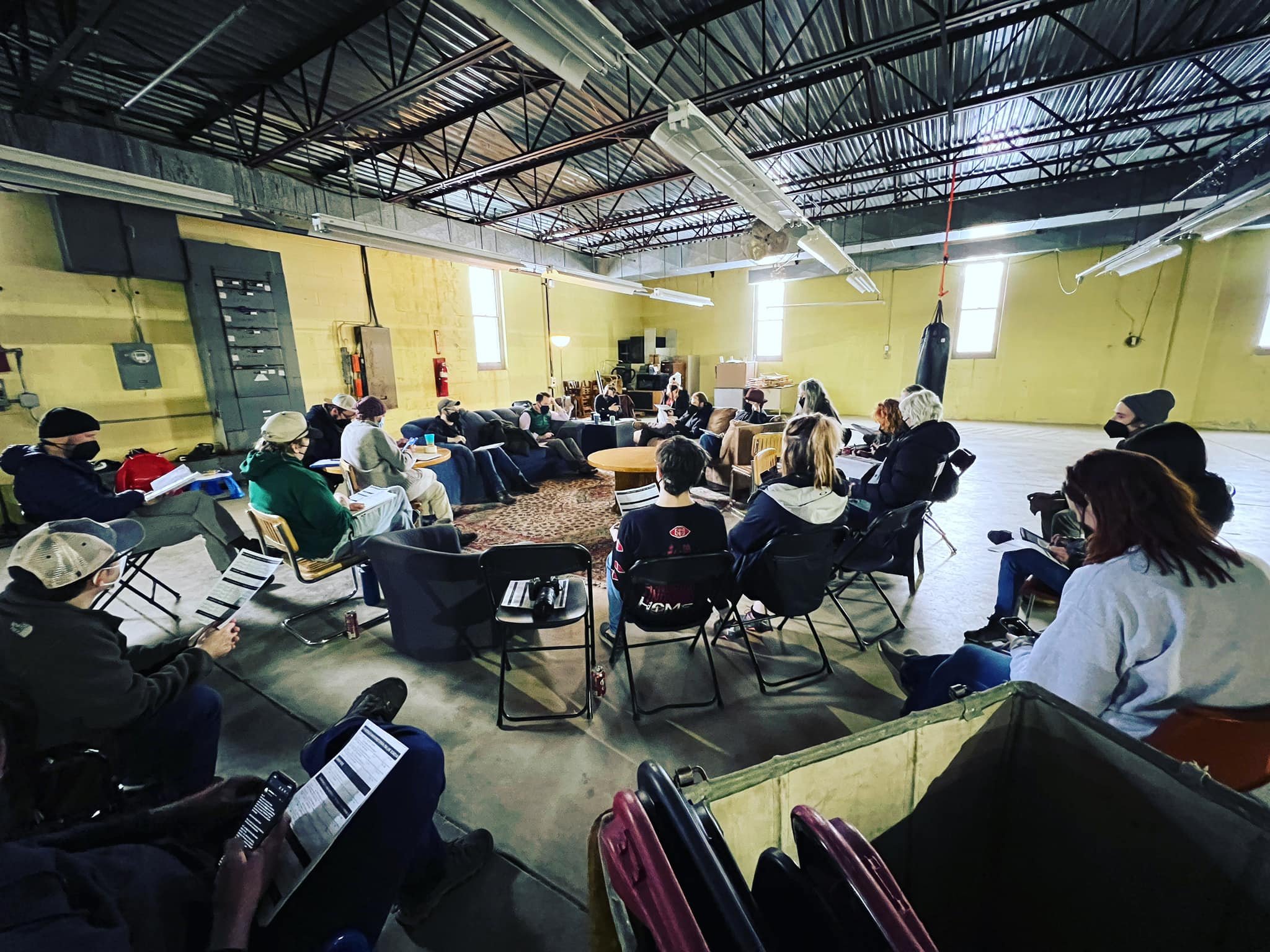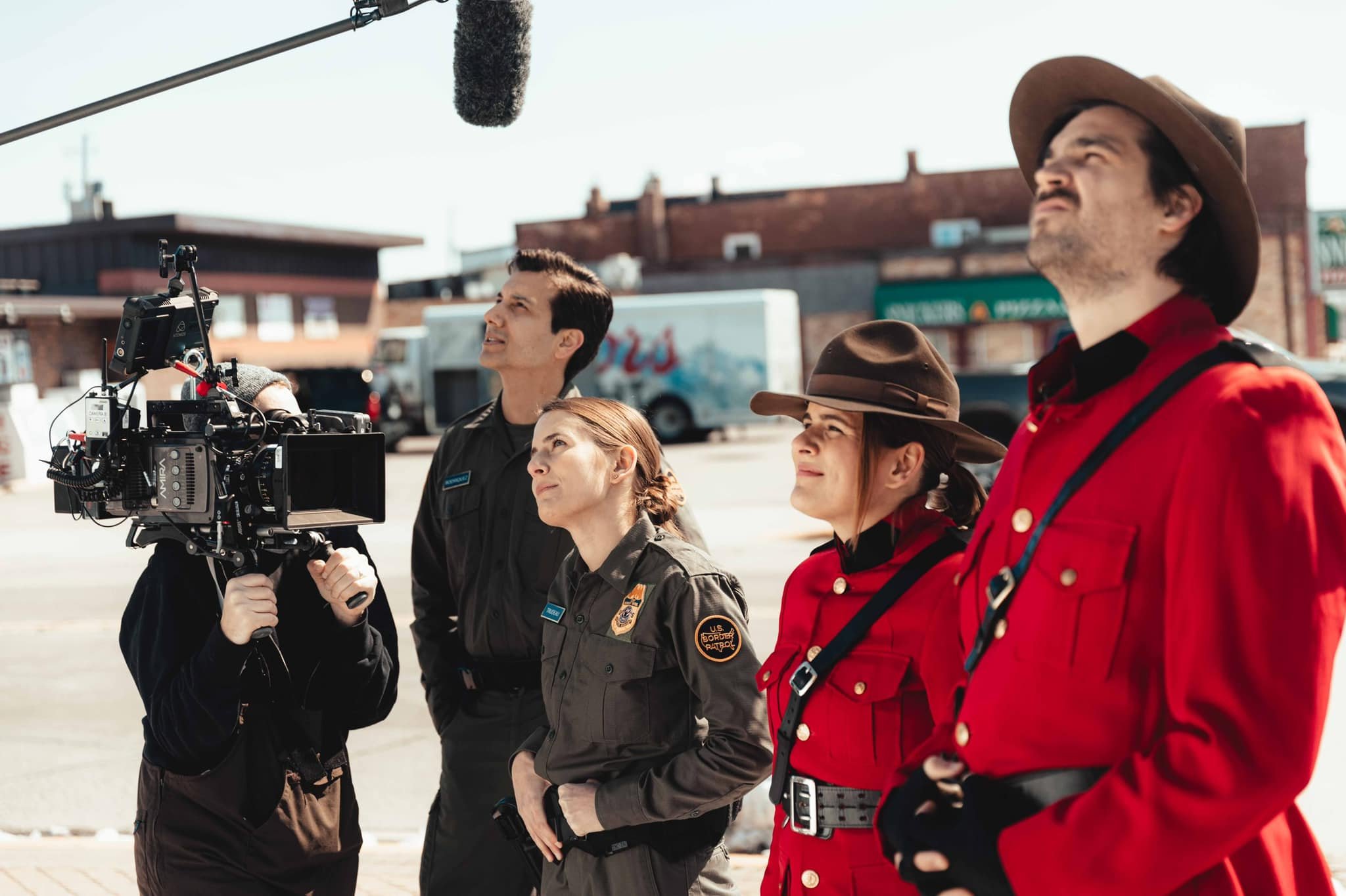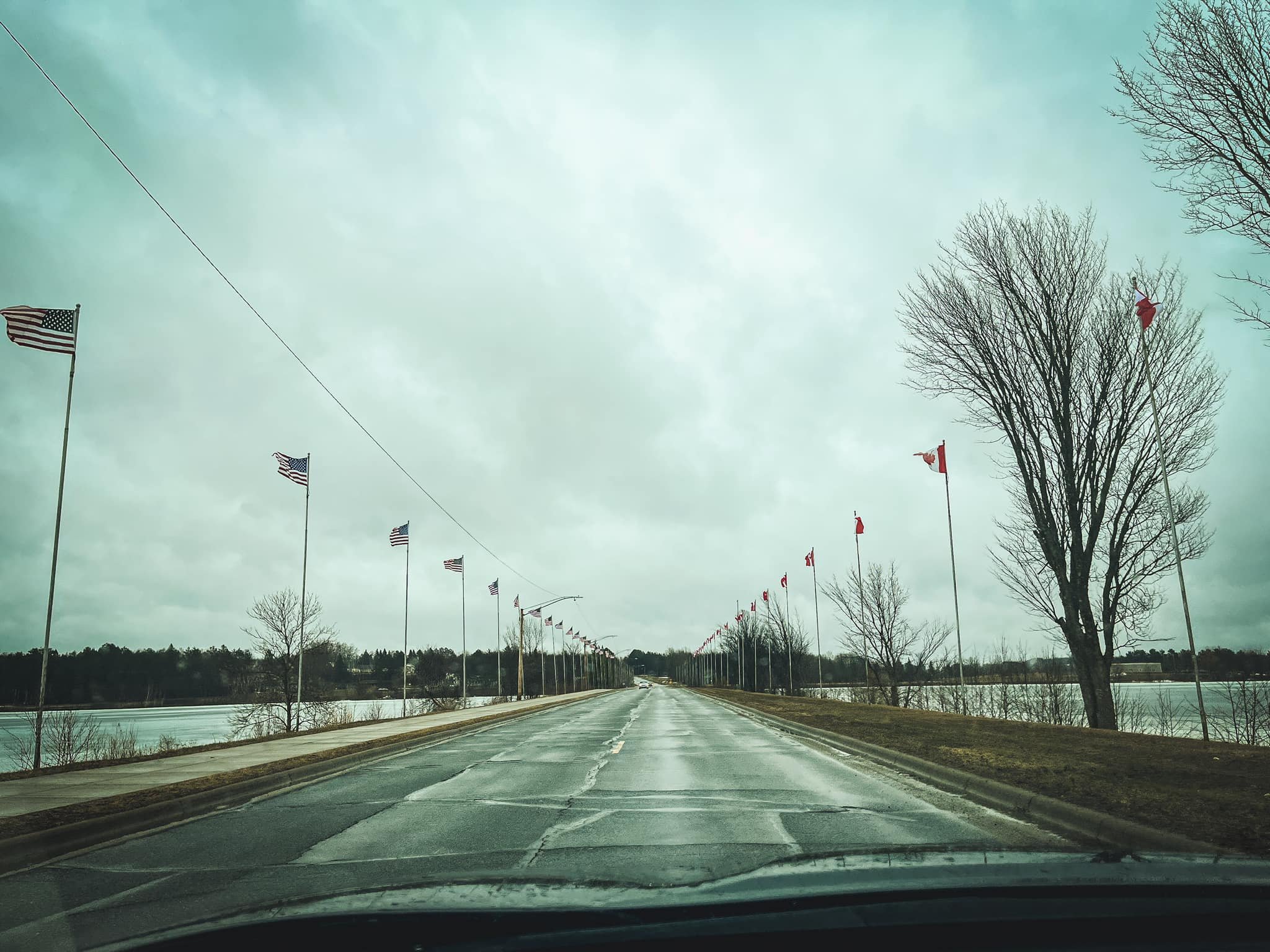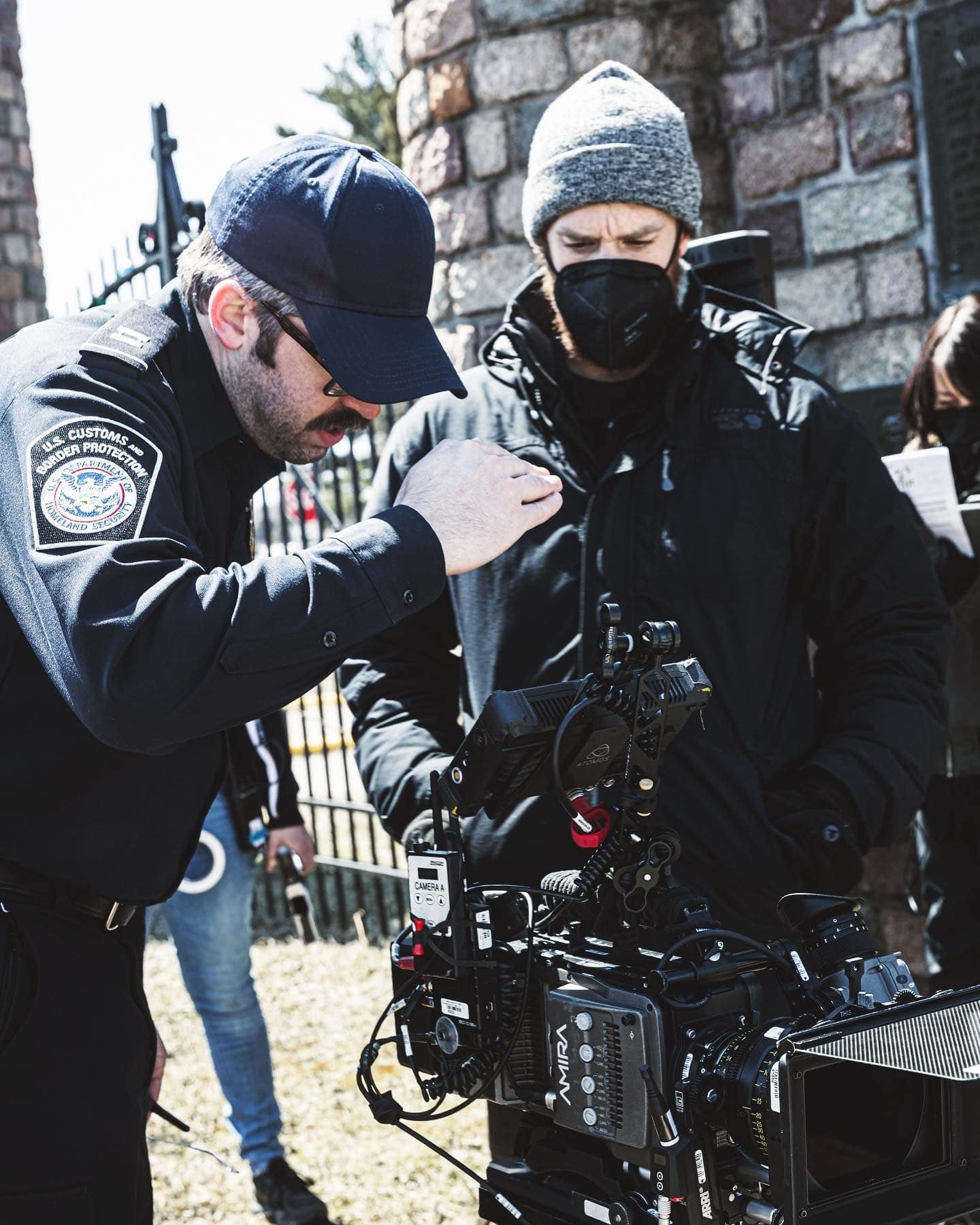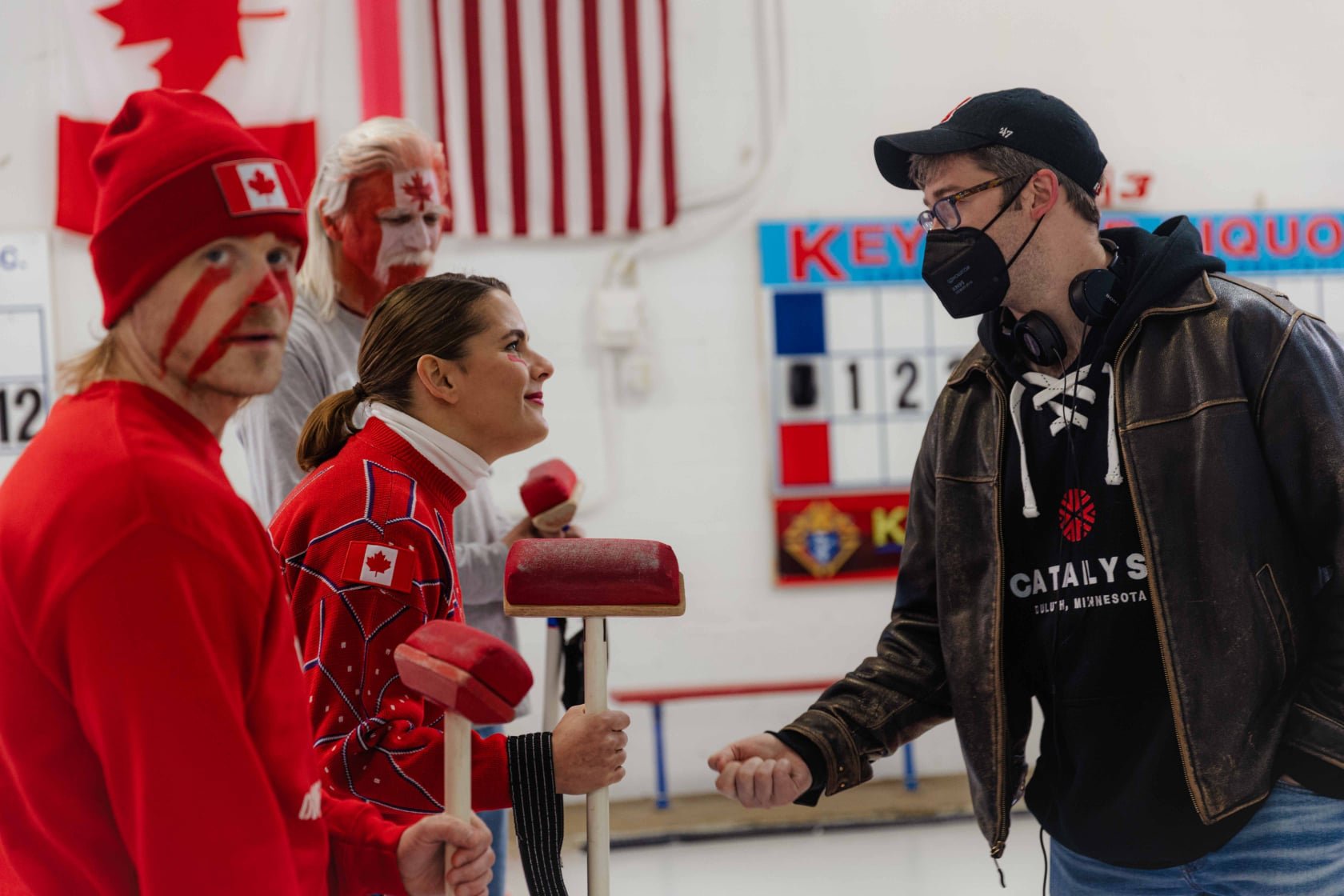Behind the Scenes of Canusa Street with Zack Morrison
HOW DID YOU COME UP WITH CANUSA STREET?
Photos provided by Zack Morrison.
Zack Morrison: The idea behind Canusa Street came from a mix of places. First of all, I’ve always been fascinated by obscure cultural divides, and growing up in Central Jersey leaves very little to the imagination. A few towns north from us, people start talking like Tony Soprano, and a few towns south from us, well—that weird Philly accent starts happening. Stuff like Taylor Ham/Pork Roll, Sub/Hoagie, Sprinkles/Jimmies (unsure why it’s always about food, but here we are) is hilarious to me. Not to mention all the sports allegiances. So that was the foundation of the interest in a story like this, as someone who grew up in the overlap zone around Exit 9.
Then came a Writers Room workshop in grad school at Columbia University. We simulated a writers room for a semester, with the professor acting like the showrunner and each of the students being assigned an episode of the series we were writing together. On the first day, everyone pitched show ideas. I forgot what mine was, but the show the class settled on was a VERY DARK, VERY SERIOUS drama about drug smuggling on the US/Canadian border. Naturally, as one of the only comedy writers in the entire school, my initial instinct was that this show should be a sitcom. We put so much emphasis about a crisis on the southern border but culturally we kinda just shrug off the Canadian border, despite it being much larger, and significantly less protected. I don’t know, it’s funny to me. I was overruled unanimously, and the class moved on.
The idea sat on the shelf for five years or so until the pandemic hit in 2020. I was out of work, and looking for something to write to keep my brain from going insane. It just so happened that around the time the lockdown started, a news story about the very-real border town of Derby Line, VT was published. That rekindled my excitement about the story and then we were off to the races.
Photos provided by Zack Morrison.
WHAT WAS THE HARDEST PART ABOUT PRODUCTION?
Zack Morrison: The shoot was incredibly smooth, thanks in no small part to the amazing work of my producer, Carver Diserens; and the team at Lost Forty Studios—a production company based in Chisholm, Minnesota that we partnered with for the pilot. They were great to work with, and honestly made our lives incredibly easy. I was anticipating the idea of shooting in another state with people I’ve never worked with before to be the hardest part about the pilot, but it turns out that if you get great people who can help you find other great people—that solves that problem.
Honestly, the hardest part was probably the weather. We had a nine-day shoot, split up over two weeks, and we blew our first week’s cover set on the second day—which isn’t an ideal situation. A cover set is an indoor location that you can easily access and pivot to in the event that the weather prohibits you from shooting your planned outdoor scenes that day. We had to rework the schedule several times over the shoot, and on Day 4, we were out of options and had to wait out the rain/show/hail. (Yes, we got all three, often at the same time or within minutes of each other). The majority of our second week was indoors so that made our lives great. But yea, that first week was rough. It’s still winter in April up there.
ANY ADVICE FOR FIRST TIME FILMMAKERS ON A FEATURE OR A PILOT?
Zack Morrison: My advice for anyone about to dive into their first feature (or an indie pilot) is to first and foremost work with an experienced producer—and not only that, but to relinquish logistical control to that producer. It’s in the nature of indie film directors to want to do everything yourself. Maybe it’s because you had to do like every job on every student film you’ve made. There’s nothing better, however, than working with someone who you can trust to get things done so you can focus on the creative. Learning how to divide up responsibilities and communicate with your team is absolutely vital. Additionally, it’s important to make sure you have proper funding for a feature. On a short, you’re able to get by with favors and stuff because you’re only working for a day or two. On a several-week production with a large crew, YOU MUST have the resources in place to properly pay, feed, travel, lodge, and support all of those people. Trust me, it’s never worth it if the shoot conditions are so brutal that morale is low. As a director, you set the tone for the day. It’s your job to be the captain of the ship. Therefore, you want to foster an environment that people actually want to work in. You may be in it for the art and the story, but most often the rest of your crew is in it because it’s a job. So treat your employees well.



